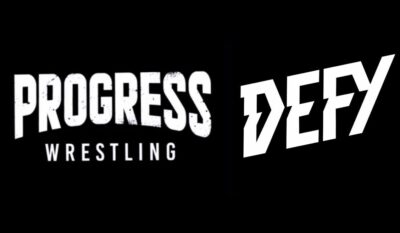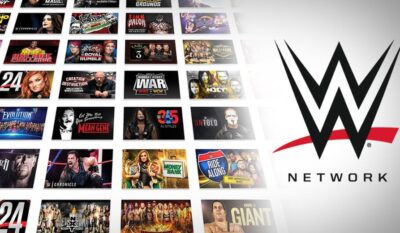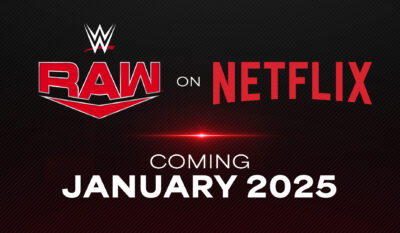Published on October 10, 2019
By Joey Mills
Every word that can possibly be written about Sunday’s WWE Hell In A Cell pay-per-view has already been typed. The murky corner of the internet reserved for deep wrestling analysis has already been swamped with invective about the WWE Universal Championship match between Seth Rollins and “The Fiend” Bray Wyatt. Some are deeply critical of the missed opportunity to crown a devilish new champion. Others are quick to defend the decision as merely the opening chapter in a story that will slowly unravel itself over the ensuing weeks and months.
This article will not attempt to sway you either way, but rather highlight a problem with where the Hell In A Cell currently sits as a concept. Sunday’s controversial bout ended in a no-contest when Seth struck “The Fiend” with a sledgehammer while he lay prone under a pile of assorted weaponry. The referee immediately waved off the contest, but why?
Hell In A Cell was established in 1997, with Shawn Michaels and the Undertaker being the first superstars to step inside the roofed cage. Their scrap at Badd Blood of that year immediately set the tone for what the Cell meant. It was brutal, violent and bloody. The viewer at home was constantly reminded that this match must have a winner and that anything went in the company’s most extreme environment. Of course, it helped to have two of the outstanding workers of all-time to solidify the newly-minted stipulation as an enduring classic. As a result, the then-WWF never looked back and Hell In A Cell would become an established tradition by the time Mick Foley and the Undertaker raised the bar the following year at King Of The Ring 98.
If you are enough of a wrestling aficionado to visit a site offering unparalleled travel opportunities to the world’s biggest sports entertainment events, you are well aware of what Foley and the “Deadman” conjured on that June evening. Upping the ante from the previous year, Foley was flung from the top of the cage in a moment replayed constantly to this day. Around this the pair constructed a match so brutal, Foley admits he remembers little of its closing stretch. Hell In A Cell would live forever as somewhere to settle only the most violent disputes that arose in the company.
The odd misstep aside, the Cell would remain remarkably well-protected for the following decade. The highlights were unforgettable, such as Triple H retiring Mick Foley (for the first time) or Undertaker making a man out of Brock Lesnar in the latter’s breakthrough WWE bout. Even when the contests didn’t quite live up to the billing, such as Triple H’s 2004 effort opposite Shawn Michaels which we’re convinced is still going on to this day, the storylines leading to them were logical. The Cell was saved for when no reasonable method could settle a bitter dispute. Hell In A Cell was the last resort, a point of no return, the feud-ender to end all feuds. That was until 2009.
In the October of that year, the pen of Vince McMahon inked a new annual pay-per-view into the annual schedule. Hell In A Cell was no longer a match concept, but the concept for a show all of its own. What was once a Hail Mary pass from authority figures trying in vain to get main eventers to stop battering each other was now part of the routine. That first year saw the concept make a modestly good start.
While CM Punk vs Undertaker does not rank amongst the best matches from either wrestler, Randy Orton vs John Cena at least had a long history backing its inclusion in the Cell. Similarly, a wonderfully daft DX vs The McMahons and Big Show match might have been silly and overbooked but was a logical full stop in a lengthy feud. But a precedent had been set which continues to hurt the once-mythical match today.
Twenty-five Hell In A Cell matches have taken place in the last decade, twenty-three of which have taken place on the titular pay-per-view. Feuds no longer move inside the Cell to be settled, but merely because the combatants happen to be clashing in October. While some of the bouts have had merit, a greater number have been both forgettable and unnecessary use of the famed cage. The shows feature between two and three matches inside the Cell, lessening the impact of the matches even on that particular evening. This coupled with WWE’s move to a broadly PG product has also seen the match’s aura erode to the point where it often feels like a normal wrestling match that happens to be taking place inside steel bars.
This brings us neatly back to this past Sunday. The ringwork between defending champion Rollins and challenger Wyatt was more than passable. The two constructed an entertaining brawl that helped established the owner of The Firefly Funhouse as a threatening new presence. But the finish flew in the face of what the Hell In A Cell has been established as. It also represented the second time in two years that WWE’s historic “anything-goes” battleground has yielded a controversial no-contest. Braun Strowman and Roman Reigns suffered the same ignominy in 2018 when Brock Lesnar interfered in their bout and the referee ruled both men “unable to continue”.

Hell In A Cell has become an inconvenience to WWE’s writers. They are bound by the calendar to ensconce their ongoing main event feuds in the steel structure but often find themselves at an awkward time in the story to crown a clear winner. The reason Hell In A Cell ended feuds is because it was established as a clear finishing point. Nowadays, WWE often finds themselves with the right tools to end storylines but at the completely wrong time to do so. Instead, we end up with the Cell being circumvented using illogical booking to try and keep feuds going beyond the event.
This is why I am going to suggest it is time to say a temporary goodbye to the iconic Cell. There are numerous advantages to this strategy. While WWE fans would at first be resistant to losing a treasured favourite, absence does indeed make the heart grow fonder.
A two or three-year hiatus would make the return of the Cell a special event, no matter who steps inside it. Secondly, it would also stop WWE’s rigid storytelling from hitting a speed bump every October, when the top-tier storylines are forced into an impossible situation by such a definitive match concept.
After the hiatus, I would advise the Cell returns to its previous once-a-year routine. Instead of being bound to its pre-Halloween slot, I would have the match dusted off only to settle the most vicious and spiteful disputes. Watching old footage, the crowd pops when Commissioner Mick Foley or chairman Vince McMahon would bark those immortal words were huge.
The surprise is part of the fun with Hell In A Cell and the match would enjoy renewed success were it used sparingly. Whether you agree or disagree with Sunday’s outcome, you can’t deny that the steel fence has lost some shine. Time to put the Cell under lock and key. It could do with polishing up for a glorious return.
You can follow Joey on Twitter at @joeythehoss












